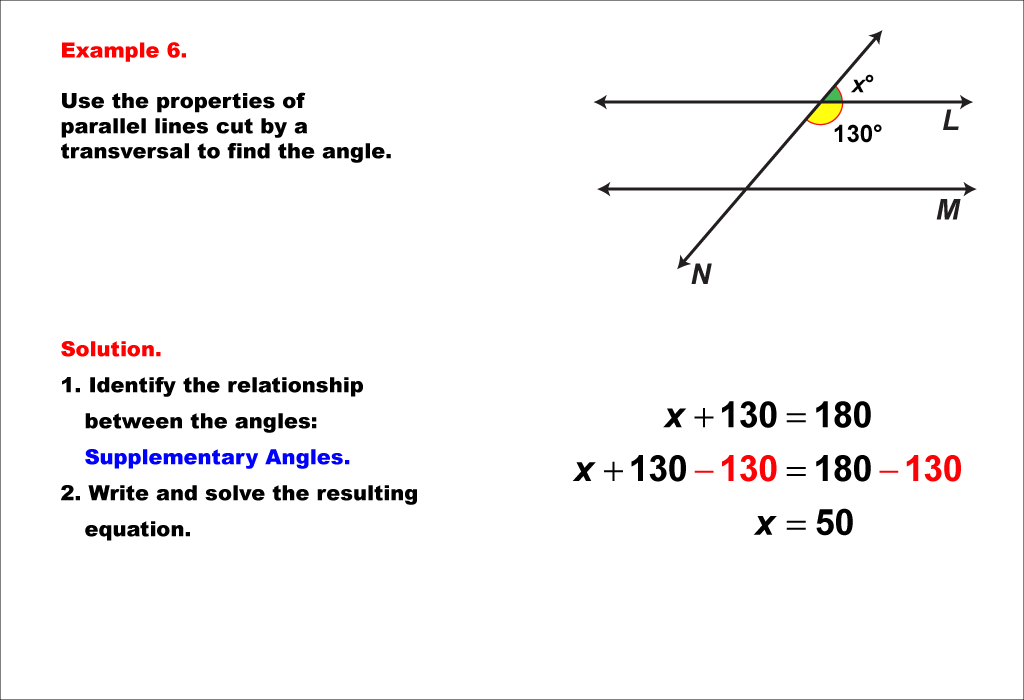
Display Title
Math Example--Solving Equations--Equations with Angles from Parallel Lines Cut by a Transversal--Example 6
Display Title
Equations with Angles from Parallel Lines Cut by a Transversal--Example 6

Topic
Equations
Description
This example presents another scenario involving supplementary angles in parallel lines cut by a transversal. The image depicts two parallel lines intersected by a transversal, with one angle labeled as 130° and its supplementary angle as x°. As we've seen in previous examples, supplementary angles add up to 180°. To solve for x, we formulate the equation: 130 + x = 180. Subtracting 130 from both sides results in x = 50. This example further reinforces the supplementary angle relationship in parallel line configurations. It's worth noting that this property is bidirectional - if two angles formed by a transversal are supplementary, it implies that the lines are parallel. This concept is often used in geometric proofs to establish the parallelism of lines. The consistent nature of these angle relationships across different examples helps students develop a deeper understanding of the geometric principles at play and their algebraic representations.
For a complete collection of math examples related to Equations of Parallel Lines click on this link: Math Examples: Equations of Parallel Lines Collection.
| Common Core Standards | CCSS.MATH.CONTENT.4.G.A.2, CCSS.MATH.CONTENT.8.G.A.5 |
|---|---|
| Grade Range | 4 - 8 |
| Curriculum Nodes |
Geometry • Points and Lines • Parallel Lines • Angles and Planes • Applications of Angles and Planes Algebra • Expressions, Equations, and Inequalities • Applications of Equations and Inequalities |
| Copyright Year | 2021 |
| Keywords | Parallel Lines Cut by a Transversal, parallel lines, transversal, vertical angles, supplementary angles, alternate interior angles, alternate exterior angles |